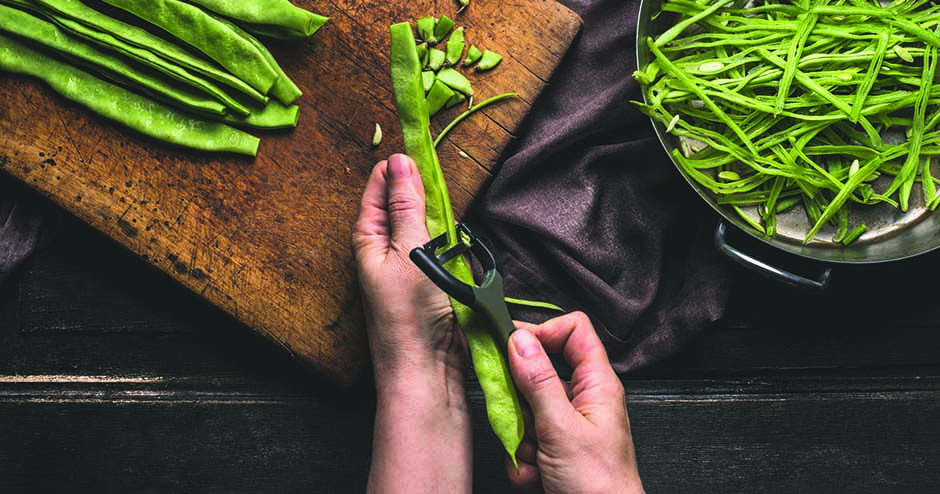Chefs often cook a bit differently at home than they do at work, given that the kitchen is usually a lot smaller, as is the crowd they’re working for. Even so, many tricks and shortcuts they’ve learned in their trade translate quite nicely to the home front. Here, Nathan Crave of Seattle’s Palace Kitchen lets us in on the tools and tips he uses at home for a happier and hassle-free cooking experience.
- Invest in a new peeler. Use a horizontal plastic peeler, instead of the old metal ones your mother had—they’re the worst! Having a new, sharp peeler really helps. I use one from Kuhn Rikon—it’s the only kind I’ve used for the past 15 years.
- Opt for parchment paper or Silpat non-stick baking mats. They’re great for roasting vegetables and baking. Silpat probably works out a little better than parchment paper, and you only have to buy one—those things last forever, as long as you don’t cut on it. I also recommend silicone cake molds: Nothing sticks in it, so you can bake in it, you can freeze things in it, and cleanup is extremely easy.
- Freeze wisely. I make a big batch of chicken stock and then freeze it in quart- or sandwich-size bags—gallon-size is usually too big. Cool the stock first; then fill the bags and lay them flat. If you make chili or soup, then you might want to use a gallon-size bag.
- Roast vegetables in batches. If you completely fill the pan, they don’t cook well. Vegetables roast more evenly when the pan isn’t as crammed. Aim to fill about three-quarters of the pan.


